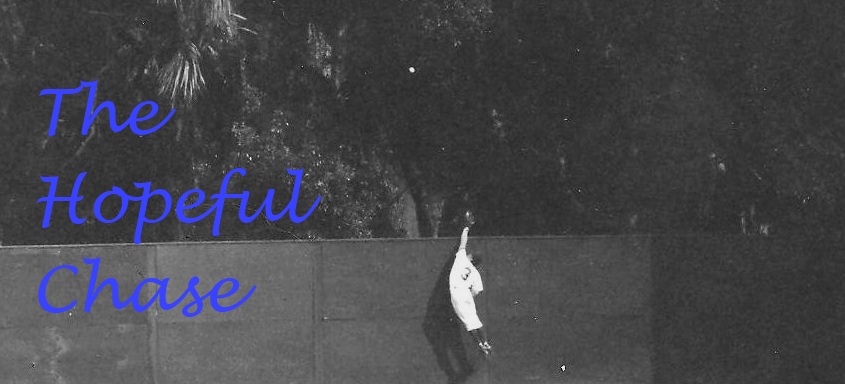Coming up soon I’ll have a quick post about some changes
regarding this here blog – that’ right I’m going to start charging for it. $99 bucks for a year’s subscription! Just kidding, this site will always be free,
because frankly that’s what this content is worth. I mean who wants to pay to
read lame jokes about hockey cards?
Now, it’s time for the good ol’ Raw Charge Question of
The Week! This week it’s a nice general
topic about the NHL in general.
 |
| Antennas optional |
Make the players wear the Great Gazoo’s helmet. Boom concussion problem solved. Now everyone
can get back to watching their favorite players without wondering if the next
hit will force them to spend the rest of their life in a dark room. That was
easy enough, eh?
Actually, as I think about the question and scroll over
some of the other folk’s answers I keep coming back to an idea I’ve been
kicking around for a couple of seasons.
Pretty much since I returned from my one year protest following the lock
out:
Make the playing surface bigger.
According to Rule 1.2: “the official size of the rink
shall be two hundred feet (200’) long and eighty-five (85’) wide.” The rinks have generally been that size since
the NHL began play. Some of the older
barns like the Boston Garden may have had slight variations, but now, as the
new buildings become more uniform, most of them play to those regulations.
 |
| According to Wikipedia (where this picture is taken from) The Garden measured 191x83 |
The problem is, while the rinks have stayed the same, the
players have gotten bigger. When the
Toronto Maple Leafs won their last Stanley Cup in 1966-67 their biggest
everyday skater was Frank Mahovlich who was listed at 6’ 205lbs. Last season’s Bruins team featured 13 players
on the roster bigger than that with Zdeno Chara logging an impressive 6’9”
255lbs.
 |
| 1940's player meets 2010's player |
Add in two referees and two linesmen and that’s a lot of
human flesh cluttering up the ice. Even with some of the rule tweaks that were
instituted post lock-out it’s easy for defensive minded teams to clog up the
neutral zone and choke off entry into the offensive zone.
Any time widening the playing surface is mentioned the
immediate outcry is that owner won’t go for it because it’ll eliminate too many
expensive seats along the glass. That’s true, but at least it’ll give them an
excuse to raise ticket prices as opposed to doing it for no apparent
reason. Or, maybe they can see past the
short term loss of revenue to the long term benefit of strengthening the game.
Smart owners will find ways to recover the revenue lost
from removing a couple rows of seats.
After all, Lightning owner Jeff Vinik made the audacious move of
removing luxury suites during the latest Ice Palace renovation and hasn’t
suffered from it. In fact, he’s received
nothing but praise (and boosted attendance) for the recent makeover.
Expanding out to full international ice (210 x 98) might
not be the answer, but adding 2 or 3 feet of width on each side will make it
hard for teams like the Lightning to stack the blue line with three or four
defenders to prevent the opposing teams from skating freely into the zone. Of course, with the way the Lightning
defenders have been letting the other team into the zone uncontested all year
that really hasn’t been a problem yet.
Wider ice surfaces might not be a cure all for the
concussion rampage that is currently sweeping through the league but it can’t
hurt either. Space equals time in the
NHL. Making a defender skate an extra
foot or two to deliver a crunching hit along the boards could be the difference
between Sidney Crosby suffering another brain bruise or him slipping by and
scoring a goal.
Some critics complain that games played on international
ice by European professional teams are low-scoring and boring. That the large ice surface makes the game
resemble soccer more than the high-impact, rock ‘em-sock ‘em NHL hockey they’re
used to watching. Well, yeah of course
it’s not the same – they’re not using NHL-caliber talent. While they’re pretty good, they’re not the
best. Moving to larger ice won’t eliminate hitting, but players will have to be
more conscious about making sure they are in the proper position to make the
hit.
The league has a lot on its table this summer. From negotiating a new CBA, to realignment,
ownership issues, concussion problems and a serious decline in the quality and
consistency of officiating the last thing they’re thinking about is redesigning
the ice rink. However, as the game moves forward and the players keep getting
bigger and faster it is an issue that will require more attention.
 |
| Gonna keep postin' 'em! AP David Zalubowski |

3 comments:
2 words - Sharpened skates
I think widening the ice surface by 2-3 feet is a great idea, but I doubt that will ever come to fruition. I'd also like to see the elimination of the trapezoid. I've also noticed that you don't see penalties called for things we would see in the past(i.e.-spearing, obstruction interference etc.). I also think that NHL coaches should be able to challenge certain penalties as well as goals(i.e.-like they do in the NFL, but with only 1 time-out, what to do?).
I'd get rid of the Bettman point (and the shootout with it) and the false parity it brings. Your record should be your record.
I could live with the Olympic ice surface.
Post a Comment